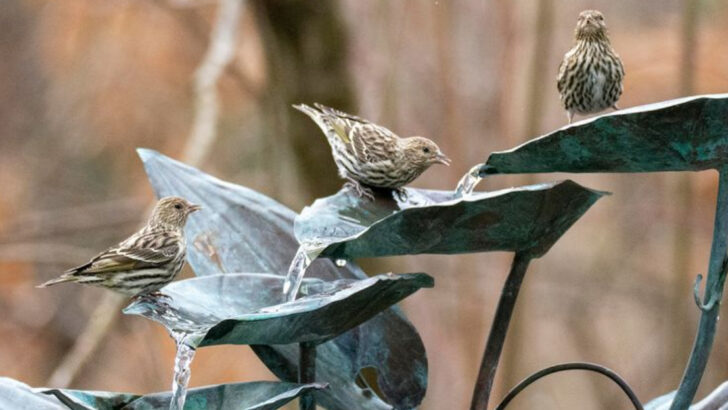You might think you’re doing birds a favor. A cute little bath in your yard. Fresh water. Sunny spot. What could go wrong? A lot. From murky puddles to predator perches, your birdbath might be a disaster in disguise. While you’re hoping for a feathered spa day, the local birds are steering clear—and for good reason. The smallest details can turn a backyard oasis into a danger zone. Wrong depth? Bad location? You might be sending “stay away” signals without even knowing it. Let’s fix that. These 18 common birdbath blunders could be the reason your yard stays silent. Make a few smart swaps, and suddenly your birdbath becomes the neighborhood hotspot.
Deep Water Levels

Imagine stepping into a pool where the water reaches your chin. Birds feel the same way about deep birdbaths. Water that’s too deep can be intimidating and unsafe for our feathered friends.
To remedy this, ensure the water depth is no more than two inches. You can add rocks to create varying levels, making it accessible for birds of all sizes.
By catering to their comfort, you’ll find birds flocking to your yard more often. Remember, a shallow bath is a friendly bath, inviting both small songbirds and larger species alike.
Slippery Surfaces

Birds, much like humans, don’t enjoy slipping and sliding unexpectedly. A birdbath with a smooth, slippery surface can deter even the bravest bird from taking a dip.
Adding some texture to the surface can easily solve this problem. Use sandpaper to roughen the surface slightly or place small stones at the bottom.
This minor adjustment ensures birds can stand securely without fear of sliding. Creating a stable footing invites more visitors to your garden, as birds find it easier to bathe without the risk of a slip.
Lack of Fresh Water

Stagnant water is a breeding ground for algae and bacteria, which can be harmful to birds. A birdbath with dirty water is not only unappealing but also unsafe for avian visitors.
Ensure you regularly change the water to keep it fresh and inviting. Cleaning the birdbath frequently reduces the risk of disease and promotes a healthier environment.
Consider using a small solar fountain to keep the water moving. By maintaining cleanliness, you’ll encourage more birds to visit, knowing they have access to safe, fresh water.
Wrong Location
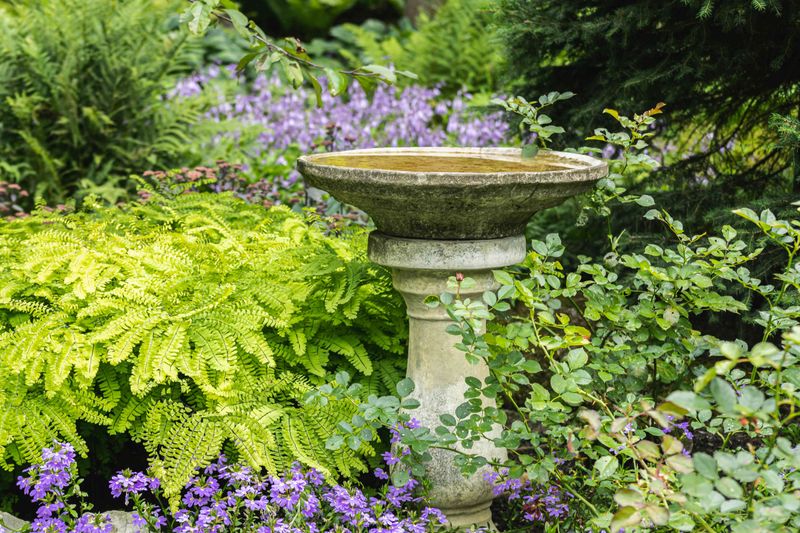
Placement is key when ensuring your birdbath is frequented by avian visitors. A birdbath in a crowded or shaded area can easily go unnoticed by birds.
Position the birdbath in an open, sunny spot that birds can see from above. This makes it more inviting and easier to spot.
Avoid placing it too close to feeders where it might be overlooked. The right location is crucial, ensuring birds feel safe and can easily access the water.
No Shelter Nearby
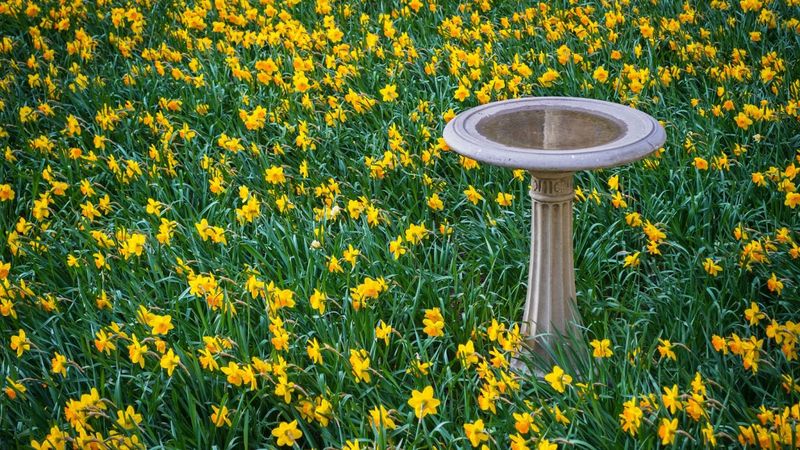
Birds appreciate a quick escape route to nearby trees or shrubs in case of danger. A birdbath situated without nearby shelter can make birds feel vulnerable.
Planting a few bushes or strategically placing the birdbath near existing foliage can provide the cover birds seek. This allows them to retreat quickly if startled.
Creating a balance between openness and shelter encourages more birds to visit. They feel safer knowing they can dash to safety if needed, making your garden a preferred stop.
Too Much Sunlight

While sunlight can make a birdbath more inviting, excessive exposure can lead to rapid water evaporation. In hot climates, this can mean constantly refilling the bath.
Try to place the birdbath where it receives morning sun but is shaded during the hottest part of the day. This helps keep the water cooler and reduces evaporation.
Balancing sunlight exposure ensures birds enjoy a refreshing bath without the risk of overheating or the inconvenience of an empty bath.
Predator Presence
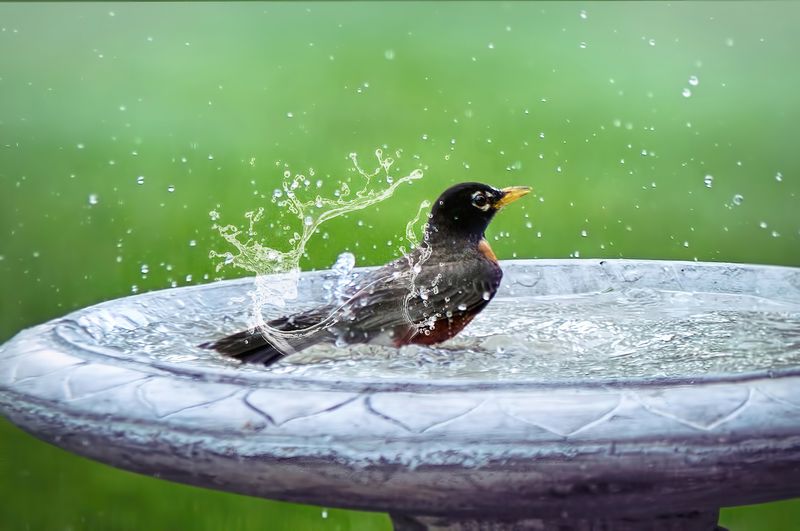
An inviting birdbath can quickly lose its charm if predators, like cats, are nearby. Birds are wary and will avoid areas where they sense danger.
Ensure the birdbath is located away from potential hideouts for predators. Keeping grass trimmed and avoiding dense underbrush can help mitigate this issue.
By creating an open and visible environment, birds feel safer, knowing they can spot danger from afar. This increases the likelihood of them visiting your birdbath frequently.
Poor Water Quality
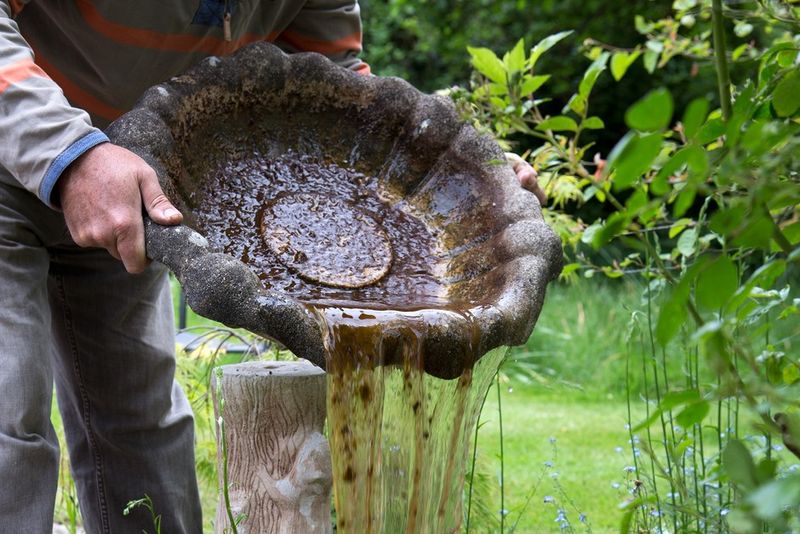
Water quality is paramount for a healthy birdbath environment. Polluted or chemically-treated water can deter birds and even harm them.
Opt for using distilled or rainwater instead of tap water, which might contain chlorine or other chemicals. Regularly test the water quality, ensuring it’s safe for avian use.
Maintaining high-quality water not only attracts more birds but also fosters a safer environment, providing birds with a reliable source for hydration and cleaning.
Inappropriate Size
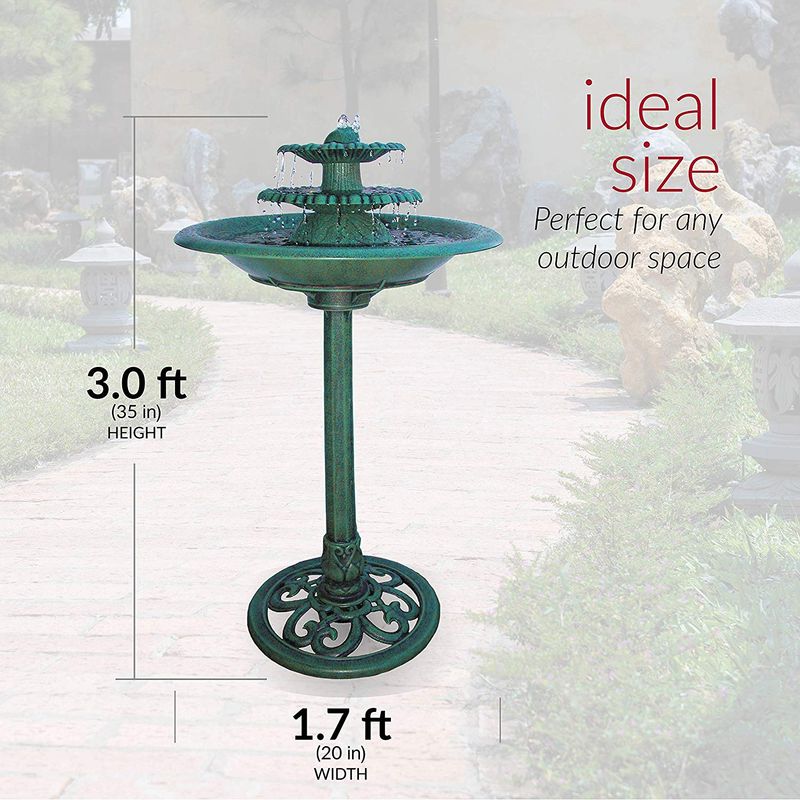
Think of a birdbath as a cozy retreat. If it’s too large or too small, it might not serve its intended purpose effectively for all bird types.
Choose a birdbath that accommodates both small songbirds and larger species. A diameter of about 24 inches is typically ideal.
Ensuring the right size invites a diverse array of birds to visit. It allows for social interaction while ensuring each bird has its space, enhancing your garden’s biodiversity and appeal.
Noisy Surroundings
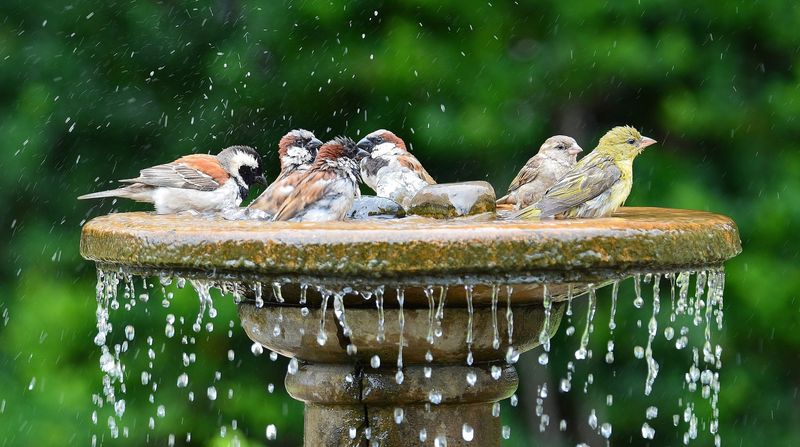
Just like people, birds enjoy a peaceful environment. Loud noises can scare them away from even the most inviting birdbath.
Position your birdbath in a tranquil part of your yard, away from noisy machinery, traffic, or other disturbances.
By providing a calm and serene setting, you’ll encourage birds to linger longer, enjoying the peaceful oasis you’ve created for them.
Lack of Perching Spots
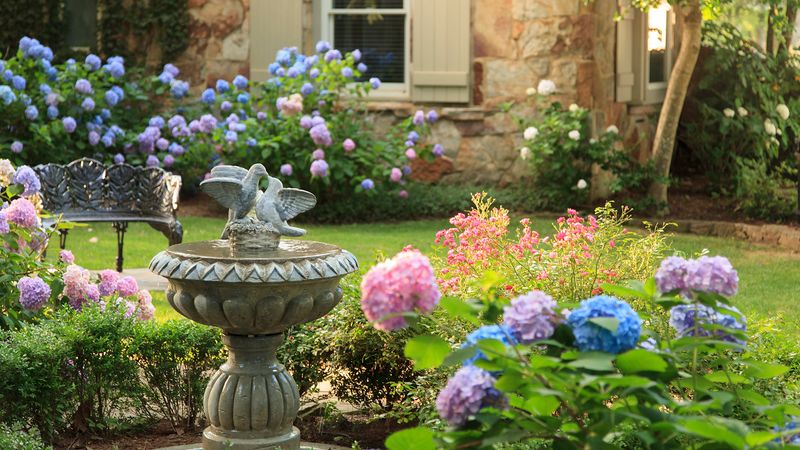
Perching spots offer birds a place to rest and dry off after a refreshing bath. A birdbath lacking these can be less attractive to avian visitors.
Add sticks, branches, or stones around the edges to create natural perches. These additions offer a comfortable spot for birds to preen and relax.
Perching areas not only enhance the bath’s visual appeal but also its functionality, inviting more birds to visit and stay a while.
Lack of Movement
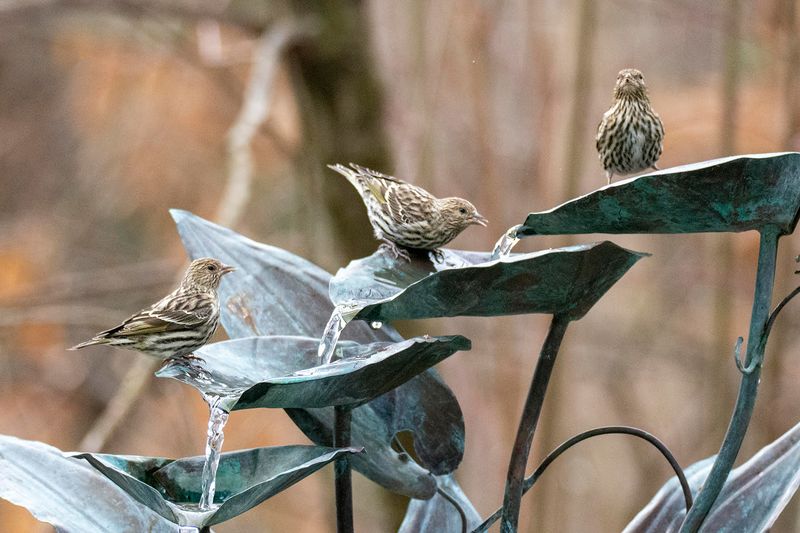
Birds are attracted to movement, which signals fresh, clean water. A static birdbath can go unnoticed, missing out on many potential visitors.
Introduce a small solar fountain or dripper to create gentle water movement. This not only attracts birds but also aerates the water, keeping it fresh.
Adding motion transforms your birdbath from a stagnant pool to a lively gathering spot, enticing birds to stop by and enjoy the refreshing environment.
Unattractive Design
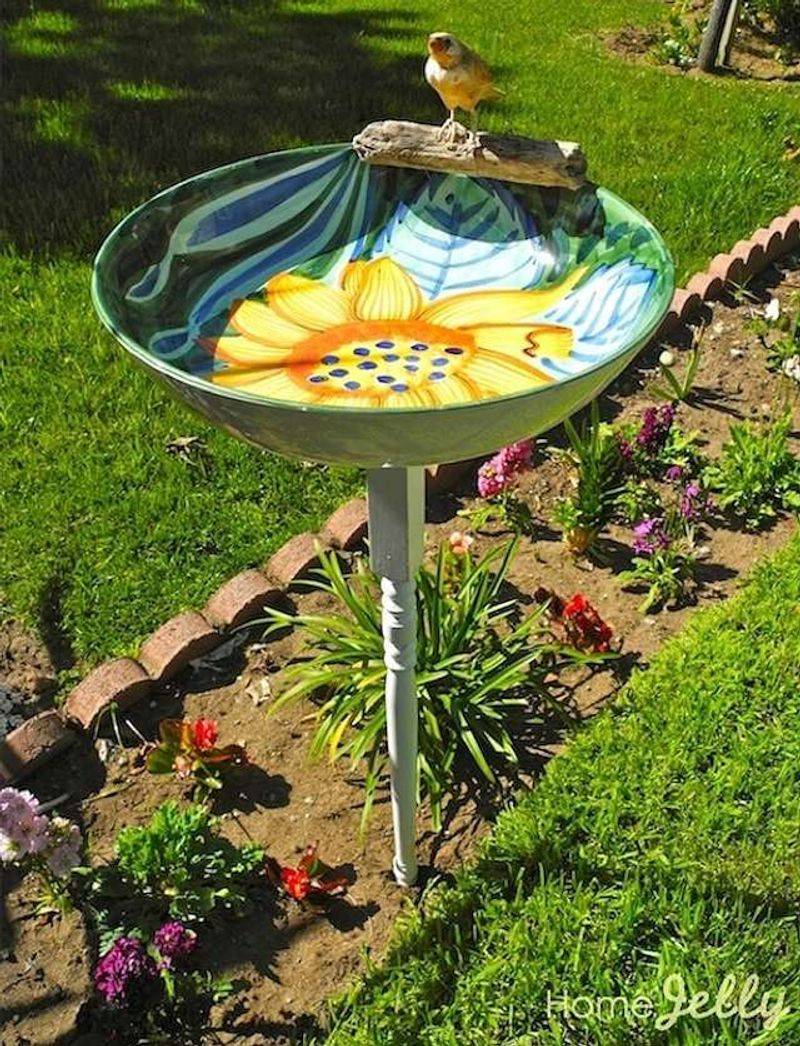
A birdbath that’s visually unappealing to you is likely unappealing to birds. Design plays a role in attracting both birds and human admirers.
Choose a birdbath with natural colors and textures that blend with your garden. Adding decorative stones or plants can enhance its look.
An attractive design not only beautifies your garden but also appeals to birds, making it an inviting spot to visit and enjoy.
Inaccessible Height
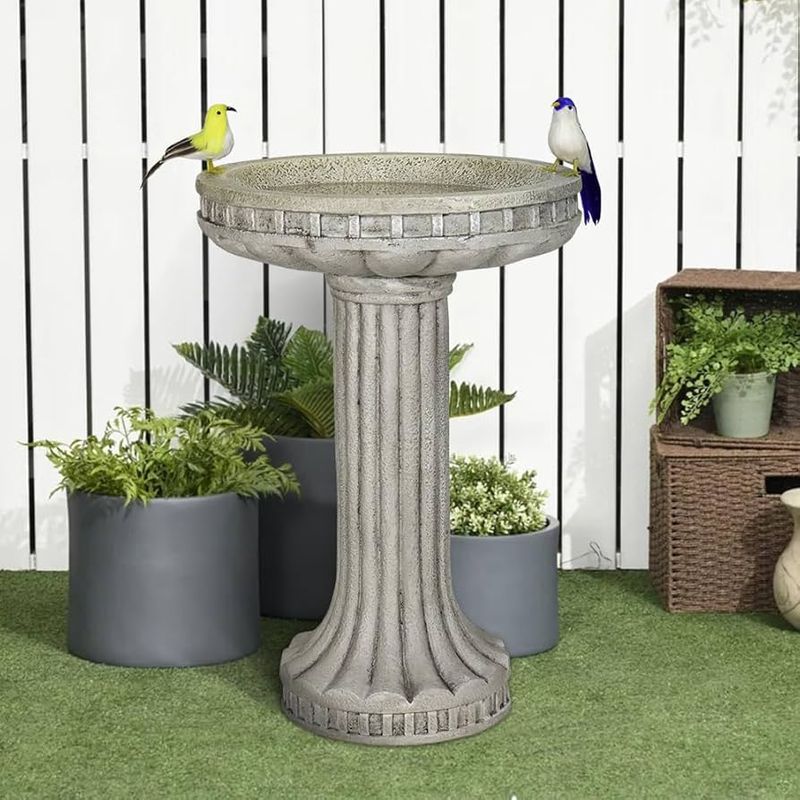
If a birdbath is too high, smaller birds may struggle to access it. This can lead to a decrease in diversity of avian visitors.
Ensure the birdbath is at a height accessible to all bird sizes, around two to three feet off the ground. This height invites small songbirds and larger species alike.
Adjusting the height allows for greater accessibility, encouraging a wide variety of birds to make use of the water source.
Overcrowding with Food
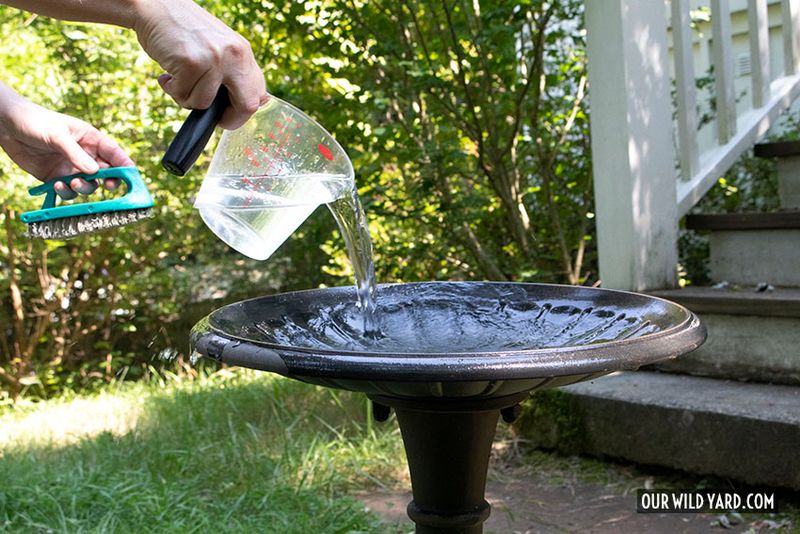
While food and water are both essential, mixing them can lead to a mess. Seeds and other debris can quickly accumulate, discouraging birds from bathing.
Keep the birdbath separate from feeders to maintain cleanliness. Regularly empty any food leftovers to ensure the water stays pure.
By keeping the spaces distinct, you’ll provide a clean, inviting environment for birds to hydrate and bathe, attracting more visitors.
Seasonal Overlook
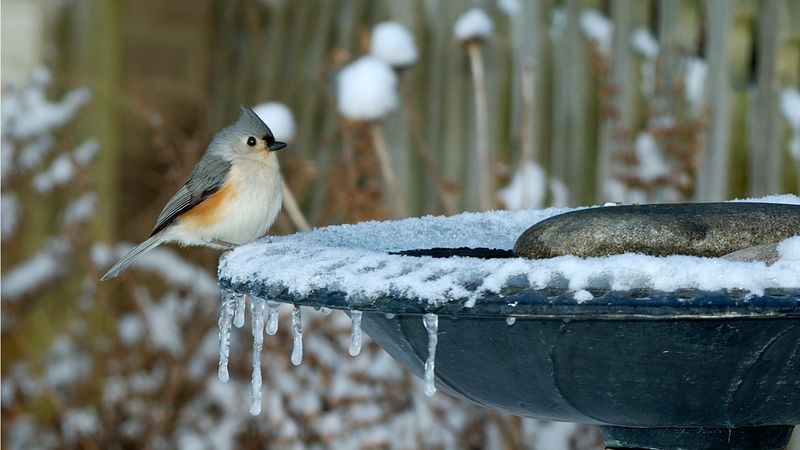
Birdbaths are not just for warm months; they offer crucial hydration in winter. Yet, many overlook their maintenance in colder seasons.
Use a birdbath heater to prevent the water from freezing, ensuring birds have access year-round. Insulating materials can also help retain warmth.
By addressing seasonal needs, you’ll support birds in every weather, increasing your birdbath’s utility and appeal throughout the year.
Ignoring Safety
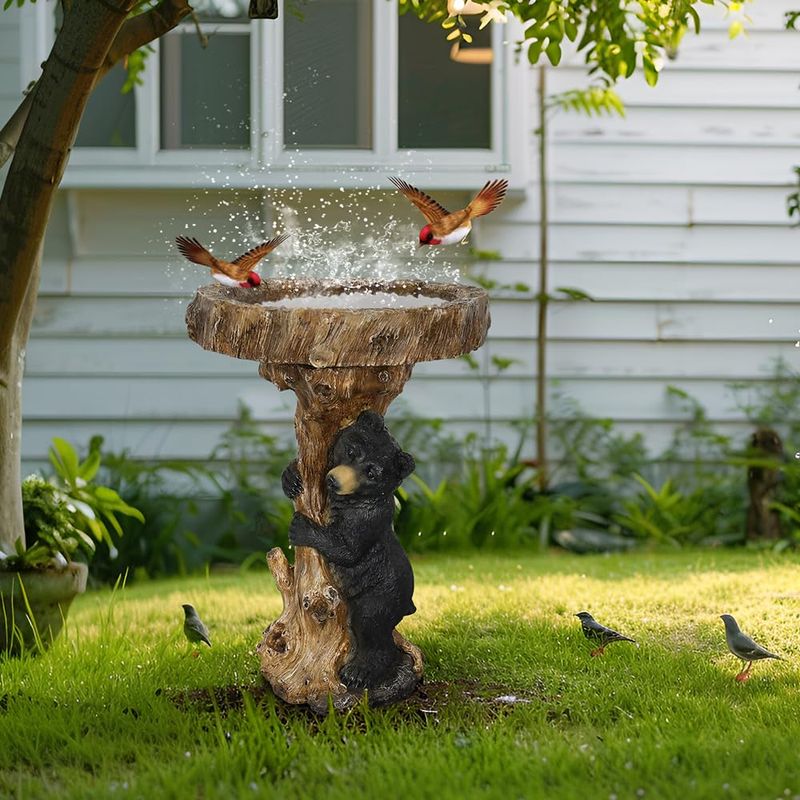
Safety is paramount for our avian friends. Sharp edges or toxic materials can pose serious threats.
Choose birdbaths with smooth edges and made from safe materials. Regularly inspect for any damage that could harm birds.
By prioritizing safety, you ensure that birds feel secure when visiting, increasing the likelihood of repeated visits. This fosters a sanctuary where they can bathe and hydrate without concern.
Lack of Variety
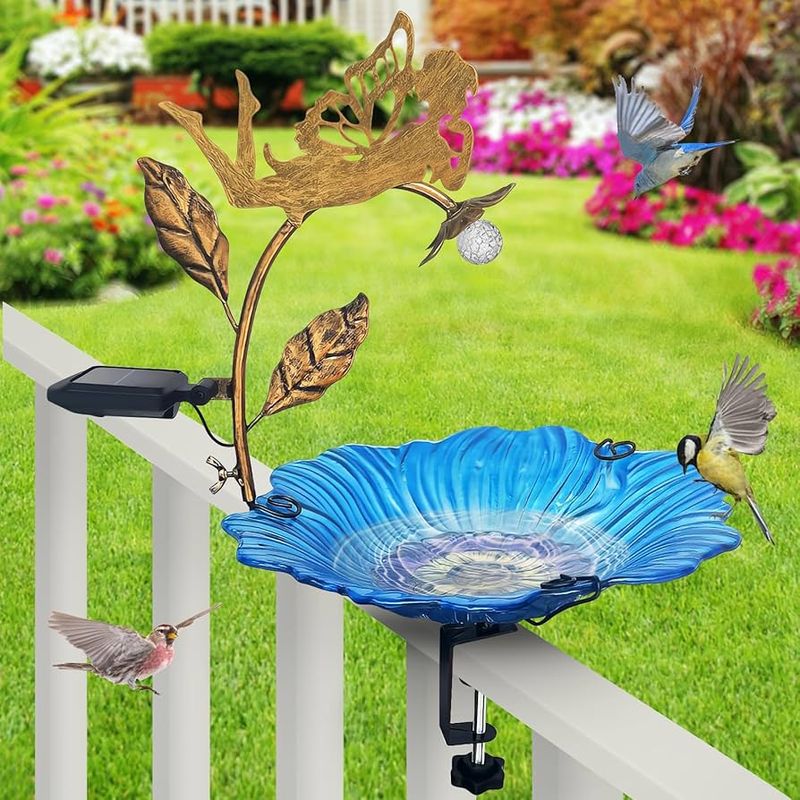
Monotony can be a deterrent for both birds and humans. A birdbath that lacks variety might not capture interest.
Introduce elements like varied stones, plants, or different water levels to create an engaging environment.
Variety not only enhances the aesthetic appeal but also caters to different bird preferences, making it a vibrant hub of activity for diverse avian species.

